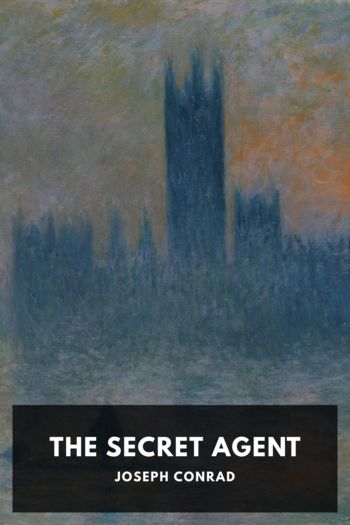Hidden History: Lost Civilizations, Secret Knowledge, and Ancient Mysteries Brian Haughton (an ebook reader .txt) 📖

- Author: Brian Haughton
Book online «Hidden History: Lost Civilizations, Secret Knowledge, and Ancient Mysteries Brian Haughton (an ebook reader .txt) 📖». Author Brian Haughton
In May 1999, a team of Nigerian and British archaeologists discovered massive ramparts hidden away in Nigeria's rain forest, which they believed could be evidence for the center of one Africa's most renowned kingdoms and the possible burial place of the Queen of Sheba. The monument at Eredo is the largest in Africa, and consists of a boundary ditch and 45 foot high rampart extending for an incredible 100 miles. Local people in the area say that Bilikisu Sungbo, another name for the Queen of Sheba, is supposed to have dug the vast Eredo kingdom boundary, and there is an annual pilgrimage to what is believed to be the site of her grave. Though the area has a long history of gold and ivory trade, which could be connected with Sheba's commercial activities, there is no direct archaeological or textual evidence to link Sheba with Aksum. In spite of the local legends, the monument itself seems to have been erected at least 1,000 years after the Queen of Sheba's supposed reign in the 10th century B.C.
Despite the uncertainty of the archaeological and historical evidence in support of the reality of the Queen of Sheba, the image of a woman of power combined with wisdom and beauty has continued to be an inspiration for artists, storytellers, and movie makers for hundreds of years. From the art of the Renaissance period to the
glossy epics of Hollywood, Sheba's influence has been considerable. Indeed, the Queen of Sheba has been a favorite theme in the movies throughout their entire history. Some of the best known versions and variations of her story include J. Gordon Edwards' 1921 silent The Queen of Sheba with Betty Blythe in the title role, which tells the story of an ill-fated romance between Solomon, king of Israel, and the Queen of Sheba; Solomon and Sheba (1959) with Yul Brynner and Gina Lollobrigida; The Queen of Sheba Meets the Atom Man (1963); and Solomon and Sheba (1995), in which Halle Berry played the first black Sheba.
Though concrete evidence is at present lacking, it remains entirely possible that there was a historical Queen of Sheba, as portrayed in the Bible story and later legend. There were certainly powerful female rulers in ancient Arabia, and perhaps further excavation and research in the area of the ancient kingdom of Saba will one day reveal the real woman behind the Sheba story. Regardless of the archaeological and historical evidence, in parts of Africa and Arabia the story of the Queen of Sheba is still told, as it has been for perhaps 2,000 or 3,000 years.
The Mystery of the Tarim Mummies
Tarim Basin mummy, photographed by Aurel Stein, c. 1910.
The Tarim Mummies constitute a baffling ancient world mystery, and one of the most remarkable archaeological finds of the 20th century. These amazingly well-preserved human remains were found in the dry salty environment of the vast Taklimakan
desert, part of the Tarim Basin in western China. The bodies so far discovered have an extremely wide date range, from 1800 B.C. up until A.D. 400. But what has captured the attention of scholars all over the world is the fact that the mummies have distinctly European features, and seem to represent various Caucasian tribes who lived in this desolate area of western China up until 2,000 years ago, before mysteriously disappearing.
The mummies were first discovered in the early 1900s by Swedish explorer Sven Hedin, who was investigating the complex history of the Silk Road, an ancient series of routes which once led from China to Turkey and on into Europe. But without the necessary equipment to either preserve the bodies or transport them back to museums in Europe for study, they remained in situ and were soon forgotten. In 1978, Chinese archaeologist Wang Binghua excavated 113 of these bodies at a cemetery at Qizilchoqa, or Red Hill, in the northeast corner of the central Asian province of Xinjiang. Most of the bodies were later taken to a museum in the city of Urumqi. In the last 25 years or so, Chinese and Uyghur archaeologists have carried out sophisticated excavation and research in the area, and there are now more than 300 of these mummies known to have been discovered in western China. In 1987, Victor Mair (a professor of Chinese and Indo-Iranian literature and religion at the University of Pennsylvania) was leading a group of tourists through the museum in Urumqi when he came upon some of the mummies excavated by Wang Binghua. He found it an unnerving experience. All were dressed in dark purple woolen garments and felt boots, and their bodies were almost perfectly preserved. Fascinatingly, all the mummies had European features: brown or blonde hair; long noses and skulls; slim elongated bodies; and large, deepset eyes.
Due to the political climate in China at the time, Mair was not able to do anything about the amazing finds, but in 1993 he returned with a team of Italian geneticists who had worked on the Ice Man. The group went back to Wang Binghua's Red Hill site to examine corpses that had been reburied due to lack of storage space at Urumqi Museum. Mair and his team took DNA samples from the bodies, which proved that the mummies were Caucasoid. Mair's research also seems to show that the earliest of these European mummies represented the first settlers in the Tarim Basin.
The oldest of all the western





Comments (0)